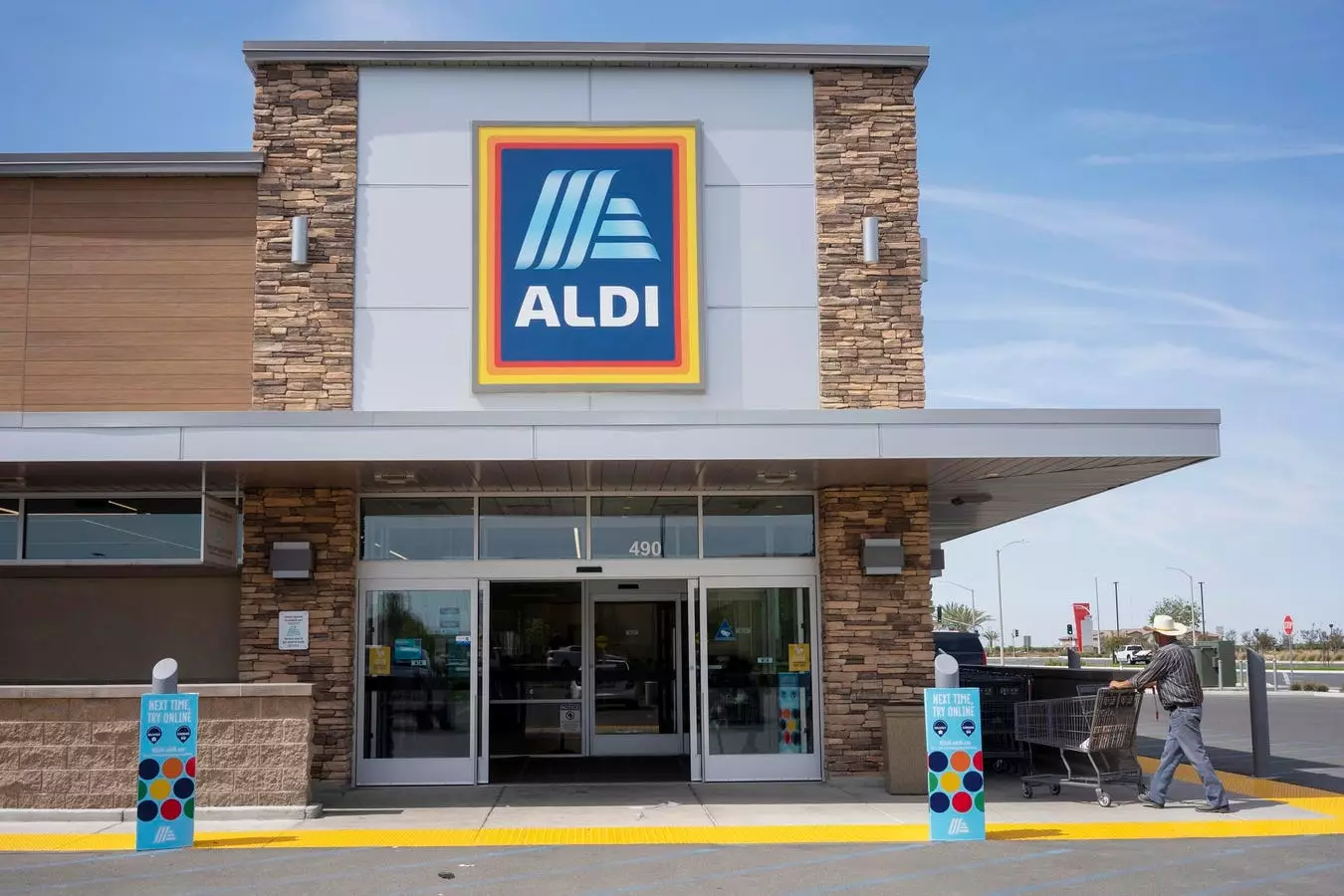In a world rife with inflation and rising food costs, consumers are constantly on the lookout for ways to stretch their grocery budgets without sacrificing quality. The challenging landscape has prompted grocery chains to reassess their pricing strategies and value propositions. Amid this backdrop, ALDI, an established player in the grocery market, has come forth with compelling evidence of its pricing superiority through its inaugural Price Leadership Report. This report not only underscores ALDI’s market position but also serves as an important indicator of current consumer trends in grocery shopping.
The Price Leadership Report, facilitated by an independent research firm, highlights that ALDI offers the lowest prices in five major U.S. metropolitan areas—New York, Los Angeles, Chicago, Miami, and Houston—when compared to both traditional supermarket chains and discount retailers such as Walmart, Lidl, Kroger, and Amazon Fresh. This data not only enforces ALDI’s stronghold over the discount grocery market but also raises significant questions about the ramifications of pricing wars in the grocery landscape.
An examination of consumer behavior reveals a remarkable trend: families can save significantly by opting for ALDI’s store brands. A family of four typically spends an average of $10,610 annually on brand-name groceries from competing stores. In stark contrast, buying ALDI’s private label products reduces that expenditure to around $6,759, boasting a 36% savings. Moreover, even when consumers choose store brands at competing retailers, ALDI’s pricing strategy still yields noticeable savings.
The implications of ALDI’s pricing model extend beyond individual savings, influencing the grocery markets of entire regions. A staggering $8.3 billion was saved collectively by ALDI shoppers in 2023 alone, reinforcing that ALDI’s economic strategies not only benefit individual customers but also pressure its competitors to reconsider their pricing models. ALDI’s rising prominence has even prompted hesitant supermarket chains to explore mergers and partnerships in hopes of remaining competitive.
For instance, the Kroger-Albertsons merger proposal is indicative of the competitive threat posed by ALDI in the grocery sector. As Jason Hart, ALDI’s CEO, aptly stated, the chain’s strength lies in its robust supplier network built over nearly five decades. Access to a diverse array of products—from locally sourced fruits to exotic imports—positions ALDI as a leader in reliability and variety, setting the standard in a market often plagued by inconsistent quality and high prices.
Despite competitive advantages, consumer perceptions can be mixed. A recent survey of 2,000 ALDI shoppers revealed that while 77% praised ALDI for having the freshest produce, only 76% believed that store brands were on par with pricier alternatives. This skepticism is curious, especially when considering individuals’ firsthand experiences with ALDI’s product tastings, which often rate highly against national brands.
ALDI’s shopping environment has evolved past mere functionality; it has transformed into a dynamic hunting ground for culinary treasures. The streamlined store design minimizes distractions while maximizing efficiency. Shoppers appreciate the time-saving benefits, with 77% of customers noting quicker shopping trips compared to traditional grocery stores. The allure of unique ALDI finds—specialty products available only in their stores—contributes to a shopping experience that is both cost-effective and enjoyable.
In today’s consumer landscape, ethical considerations are paramount. ALDI takes this to heart, actively engaging in sustainable practices that resonate with a growing demographic of socially conscious consumers. With initiatives that promote environmentally friendly production methods and focus on organic offerings, ALDI aligns its business model with the values of modern shoppers.
Moreover, ALDI’s pricing practices induce a positive ripple effect within local markets. Competitors often lower prices in response to ALDI’s entry, creating a race to affordability that benefits consumers broadly. This phenomena illustrates ALDI’s role in not just shaping its pricing structure but also influencing industry-wide trends that underscore a commitment to community well-being.
The future of grocery shopping is evolving, and ALDI is at the forefront of that transformation. Its commitment to offering exceptional value alongside an ethical consumer approach is poised to attract a wide array of shoppers, from cost-conscious families to discerning food lovers. As the retail landscape changes, ALDI’s dedication to transparency, affordability, and sustainability will secure its place as an enduring leader, proving that sometimes the simplest strategies yield the most significant results.
In a corporate world increasingly rife with complexity and compromise, ALDI’s unambiguous stance on quality and value not only counters inflationary pressures but also redefines what consumers can expect from their grocery shopping experience.

